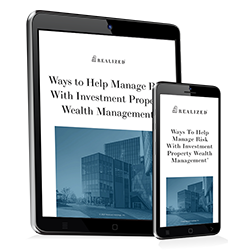Page 9 81 - 90 of 142
What is Submarket Risk in Real Estate?

Real estate investing involves various types of risks. Categorizing and identifying those risks is one of the first steps to managing them. One risk you are likely to encounter is submarket risk. Virtually every real estate investor is susceptible to this risk since nearly all properties are in some submarket. Let’s look at what a submarket is and how to analyze its risk.
What Is The Difference Between Market Volatility and Market Risk?

Real estate investing isn’t a simple process – we believe it requires strategic planning, knowledge of asset and market fundamentals, capital, experience with real property tax law, and oftentimes even a bit of luck.
How Are Volatility and Risk Related In an Investment?

Market volatility can be defined as the frequency and magnitude of price movements, up or down. The same can be applied to an individual investment; the more often the price swings and the more significant the change each time, the more volatile that investment is. High volatility can make a stock riskier, but it can increase the potential for gains as well as losses. That's because price changes can go in either direction. For example, a volatile stock could shoot up by 20% one day, drop 5% the next day, and increase by 10% the following day, followed by another 5% drop. That looks frightening, but the result is a considerable gain for the stock's owners. In contrast, a less volatile security might not gain 20% over several years.
How Is Risk Related to Operating and Financial Leverage?

Just as stock and cryptocurrency traders can amplify their gains and losses through margin, so can business owners. There are two major types of leverage at the disposal of businesses:
What Is Portfolio Risk and Return?

Pursuing high returns typically comes with high risk; for some people, that is fine. For others, they prefer to be more conservative while still seeking viable returns. How does one know when they have the potential for the best return for the amount of risk taken?
What Types of Risk Cannot Be Reduced by Portfolio Diversification?

Portfolio diversification is a basic tenant of any good risk management strategy. However, there are some risks that portfolio diversification can not improve on. It’s important to be aware of the limitations of portfolio diversification and the risks that a portfolio will face no matter how well diversified it is. This article will dig into the types of risk that can’t be reduced by portfolio diversification.
How Is Portfolio Risk Measured?

If there is one takeaway from our blogs, it’s that there is no such thing as risk-free investments. You measure your risk tolerance by understanding your financial goals and what type of return you are seeking. The general rule of thumb here is that the higher the risk, the higher the potential rate of return.
What Is Operational Risk in Real Estate?

We can define risk as potential uncertainty and/or financial loss when it comes to investment decisions or activities. Evaluating risk in real estate can be complex and investors must consider many unknowns which could potentially lower returns and value. A common risk that comes with real estate ownership is operational risk.
Ways to Allocate Assets in a Portfolio

Asset allocation is all about allocating your investments among different asset classes and diversifying your portfolio to potentially minimize risk, strive for a higher return, and work towards your investment goals. How you allocate your assets depends on how much risk you are willing to take and the amount of risk you can take to achieve those goals within a certain timeframe.
What Risk Factors Should Be Considered When Planning Your Portfolio?

The goal of a portfolio is to generate positive returns and conserve capital. However, there are always competing forces at play. Trying to achieve high returns comes with the caveat that you must take on higher risk. Some investors aren’t willing to do that. So investor risk profiles come into play.
Page 9 81 - 90 of 142


